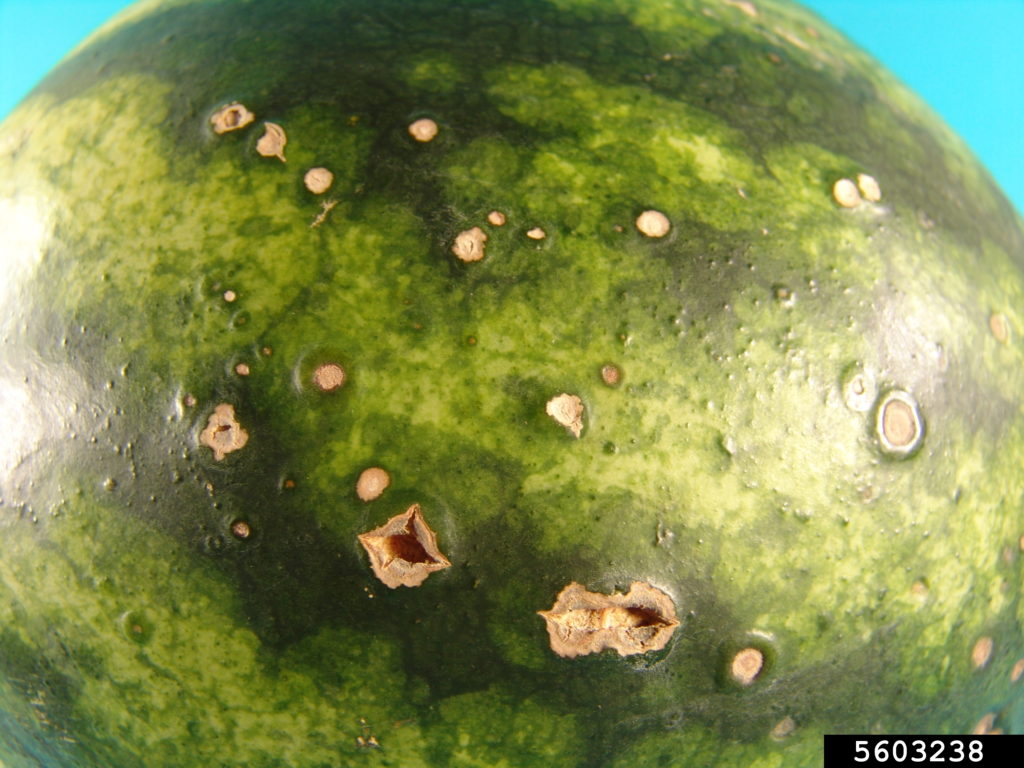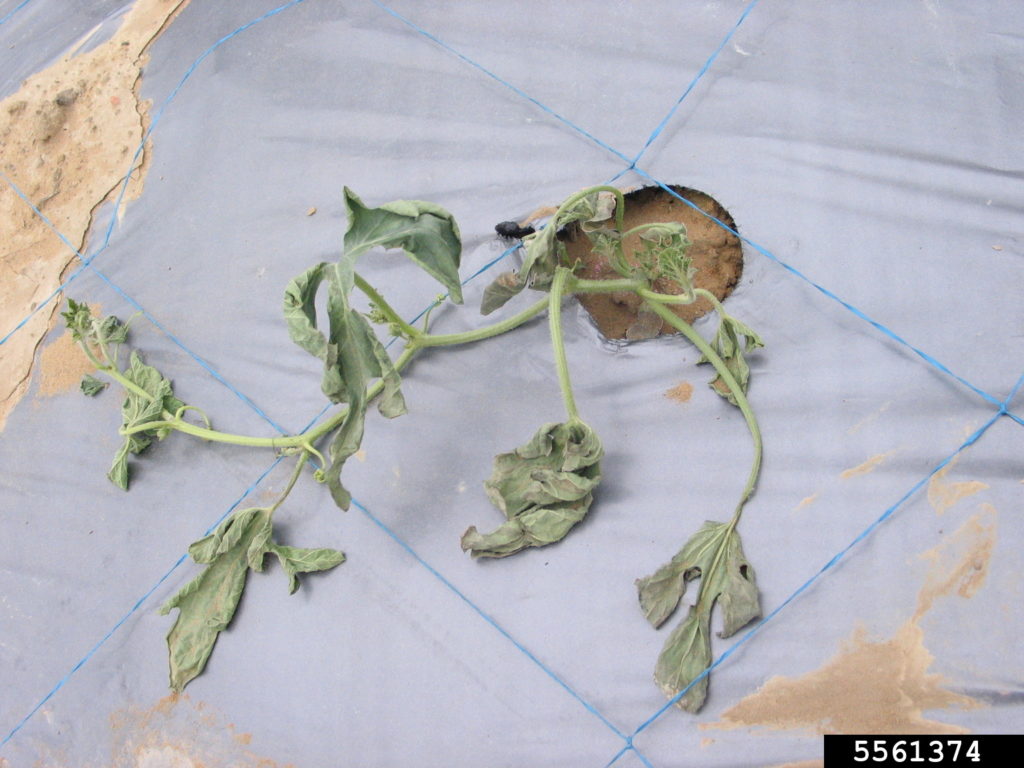
Photo by Gerald Holmes
By Frank Giles
In watermelon, diseases can spread fast. In fields where diseases have a history of establishment, outbreaks can arise quickly when conditions are favorable.
Most production guides recommend a lengthy rotation of watermelon in fields to help reduce disease inoculum. According to Bhabesh Dutta, professor of plant pathology and Extension vegetable disease specialist for the University of Georgia (UGA), rotation can help with some key foliar diseases but not so much with problematic soil-borne diseases.
“In Georgia, we typically recommend at least a three-year rotation in fields between watermelon plantings,” Dutta says. “For fungal and bacterial foliar diseases, this is enough time for the pathogens to die off. But for soil pathogens like fusarium and phytophthora, we’ve not seen much of a positive benefit from these longer rotations to reduce inoculum.”

Photo by Cheng-Fang Hong
Pushing Planting Dates
When it comes to soil disease, there’s not a lot of options available to growers to help manage the problem. But Dutta says there is some evidence that planting dates can make a difference.
“We typically see growers here start planting watermelon around March 15,” he says. “We have observed where growers have shifted that planting date a bit later to around the third or fourth week of March, we have seen some reduction in fusarium. This is due to the soil temperature heating up and being less favorable for the pathogen. We have seen some growers shift to later dates, but this is very weather dependent. Often growers’ planting timing is dictated by how wet the planting window is, and temperatures in the spring can vary.”
Grafted Transplants
In South Georgia, more growers are turning to grafted rootstock transplants in problematic fields. The Carolina Strongback rootstock is rated for intermediate resistance to fusarium and root-knot nematode, which is another nemesis for watermelon growers in the Southeast.
“The rootstock is working well. It is not immune to fusarium, but the level of resistance is considerably better than conventional transplants,” Dutta says. “These rootstock transplants are considerably more expensive, so growers are targeting the problem fields where they will plant it. In some cases, they might even only use the rootstocks in parts of fields where fusarium is present.”
Dutta says one goal of UGA research is to identify ways growers can reduce the overall costs when planting the grafted variety.
“My colleague Ted McAvoy, UGA assistant professor of horticulture and Extension vegetable production specialist, is doing some research on if we can achieve an adequate yield on reduced plant populations,” Dutta says. “He has found that with increased plant spacing and reduced plant populations, you are able to achieve similar yields to non-grafted transplants.”
McAvoy is doing other research to see if a reduced fertilizer program will produce acceptable yields when planting the rootstock. This also would help with overall costs in planting the grafted plants.
“Our goal is to reduce costs by a third to help offset the added expense of planting the grafted plants,” Dutta says. “Regardless of the costs, growers, especially larger operations, are shifting to the transplants, because otherwise fusarium would take over.”
Chemical Options
There are a few fungicides labeled for fusarium in watermelon that include Miravis Prime, Proline 480 SC and Propulse.
“The key with any fungicide treatment and fusarium is that material needs to be in place as soon as the transplant roots hit the soil,” Dutta says. “That’s really your only chance to treat with fungicide because the pathogen attacks the roots as soon as it hits the soil.”
The Big Three
Dutta says the other key soil-borne diseases in addition to fusarium are anthracnose and phytophthora. Anthracnose is a disease that has gained more economic importance in the past few seasons.
“I am leading a large research project that encompasses the East Coast looking at why anthracnose is becoming more problematic and ways that we might manage it better, including searching for new resistance in breeding lines. We also are looking at cultural practices like how irrigation timing might contribute to the problem.
“Phytophthora is the other nemesis for watermelon growers in the Southeast,” he says. “So, the big three that we are working to help growers manage are fusarium, phytophthora and anthracnose.”










